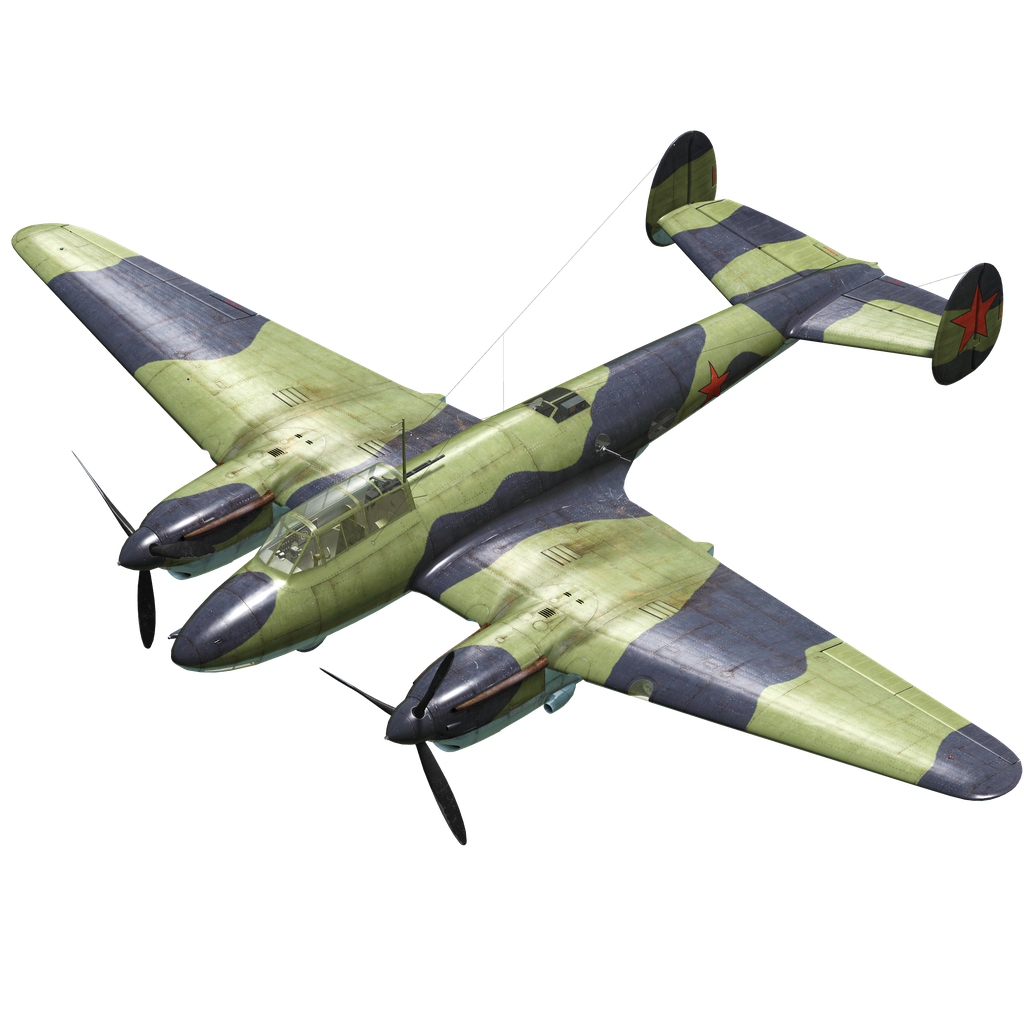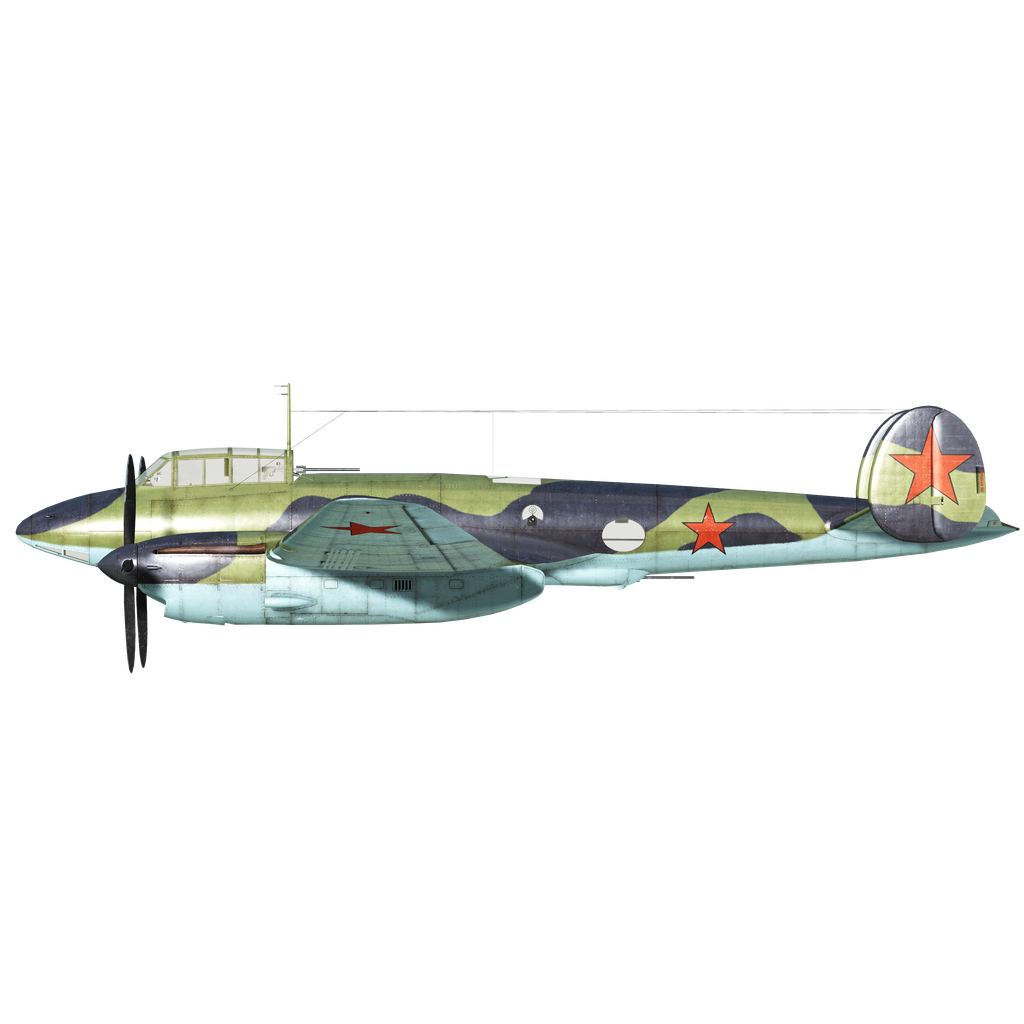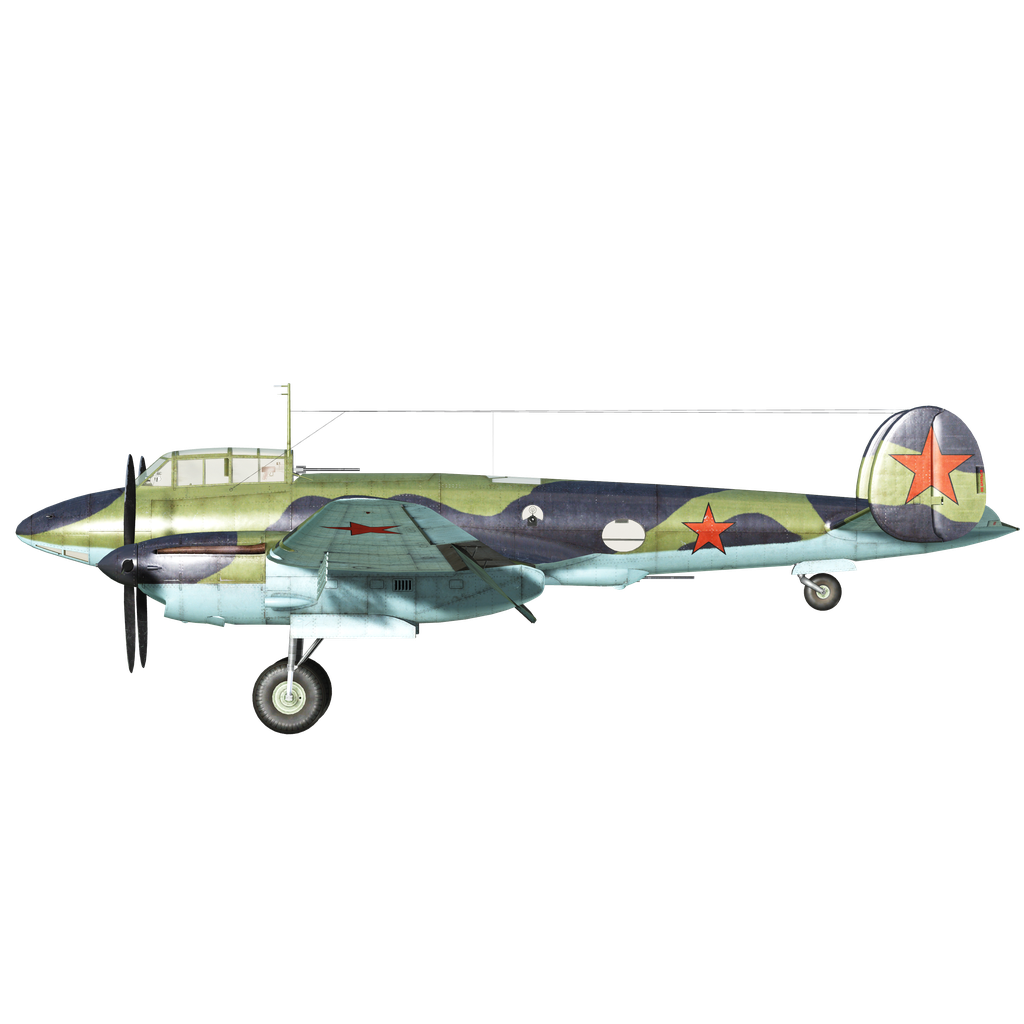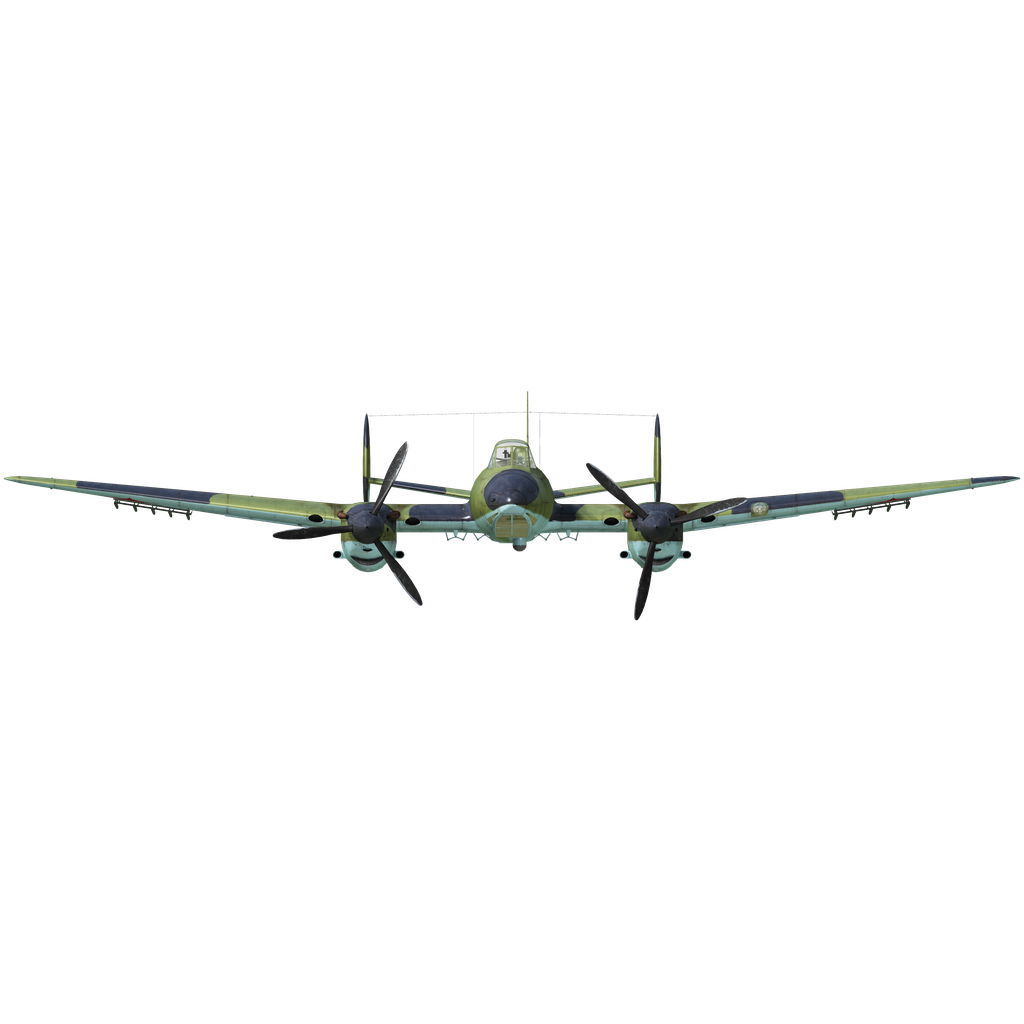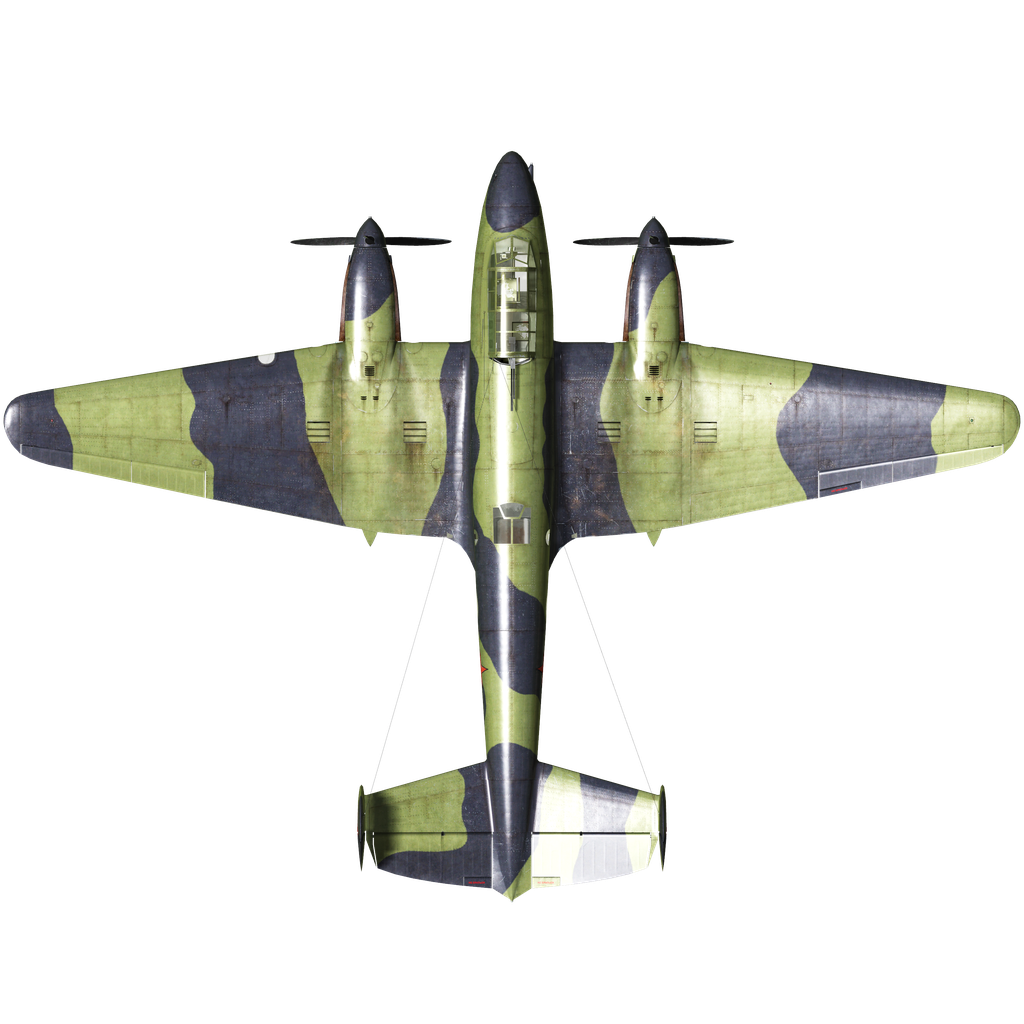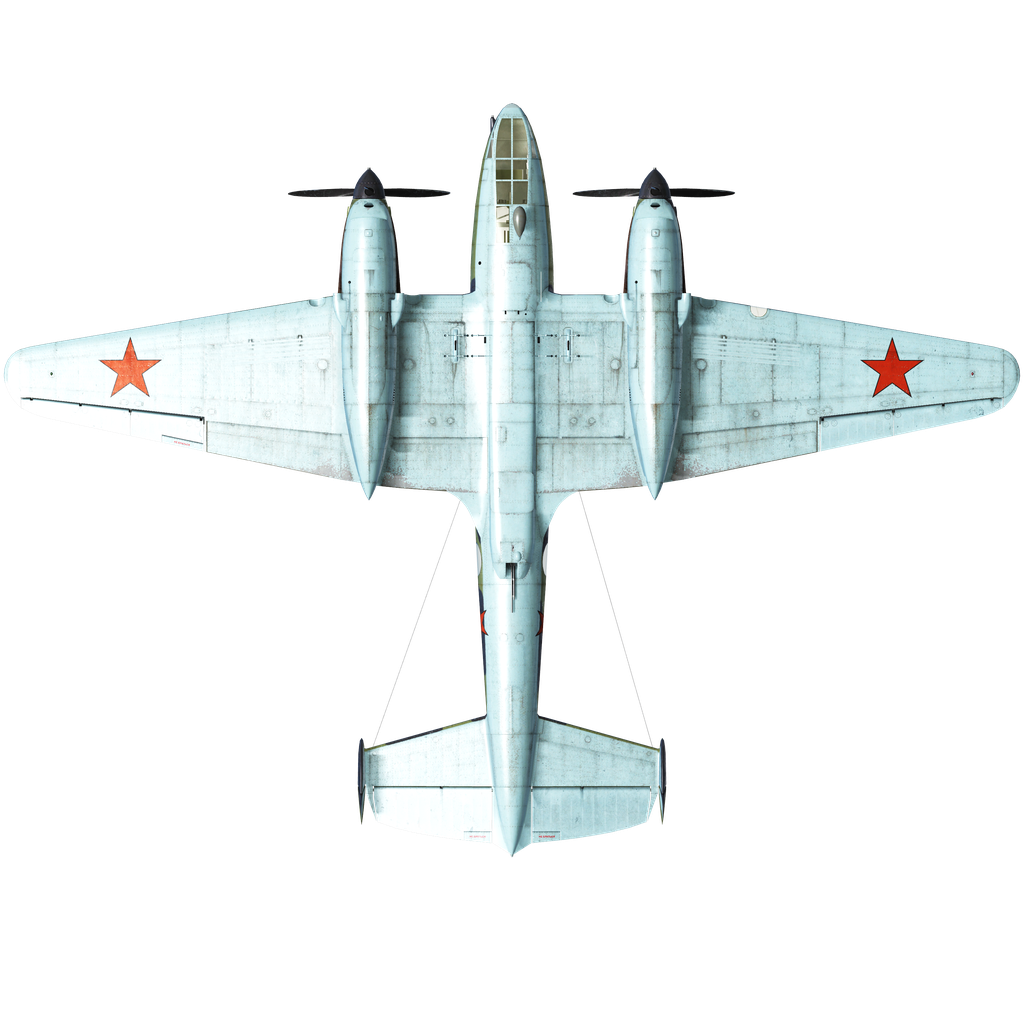The Petlyakov bomber was originally conceived as the VI-100 twin-engine high-altitude fighter, but later it was proposed to convert the VI-100 into a front-line dive bomber. On May 1, 1940, the prototype took part in an air parade over Red Square in Moscow. On November 18, 1940, a production aircraft made its first flight, designated Pe-2 in honor of the chief designer.
The dive speed was limited by brake flaps located under the wings: the safety margin allowed the aircraft to maintain a dive angle of up to 70 degrees. The aircraft was equipped with an unprecedented number of electric systems for the domestic aircraft industry: electric motors operated trim tabs, landing and brake flaps, water radiator shutters, and provided control of the stabilizer and the pump that maintained pressure in the landing gear hydraulic system.
Warfare quickly tested the solutions built into the aircraft, and the experience gained in combat greatly accelerated the process of improving the aircraft. The first changes were made to the armament — the ShKAS machine guns could not effectively counter the German fighters that dominated the skies, so the navigator's ShKAS machine gun was eventually replaced by a heavy-caliber UBT machine gun on a pivot mount - the so-called "FT" ("Front Requirements") modification, which over time was introduced into mass production.
In May 1942, the 87th series began to arrive at the front. The Pe-2 of the 87th series was a twin-engine cantilever monoplane with a low-mounted wing, a two-finned tail, and a two-strut landing gear with a tail wheel. The monocoque fuselage consisted of the nose section with the forward cockpit, the fuselage center section and the fuselage tail section (with a bomb bay between the side members), the tail section with the gunner's and radio operator's cabin and a removable tail cone. The pilot's and navigator's cockpits had large windows in front and underneath to improve forward and downward visibility during dive bombing runs and to make landing easier. Armor protected the pilot, navigator, and gunner-radio operator.
The 87-series aircraft were equipped with upgraded M-105RF engines developing 1,200 hp at takeoff and 1,260 hp at 800 m.
The defensive armament consisted of a portable ShKAS machine gun for lateral defense, a large-caliber machine gun at the lower point of the gunner-radio operator position, and a heavy-caliber machine gun for the navigator at the upper firing point of the "FT" installation. Later in the series, this machine gun was mounted on a semi-ring and equipped with a transparent glass turret, which greatly improved the installation's firing angles. The offensive armament included two machine guns, one of which was of large caliber.
The internal bomb armament consisted of six 100 kg bombs (four in the central bomb bay and one in each of the bomb bays in the rear sections of the nacelles). Four more of the same bombs could be mounted on an external rack near the center section. Bombs of 250 and 500 kg were suspended from the outside only. During a dive, only bombs from an external mount could be dropped.
The Pe-2 was the main frontline bomber of the Soviet Air Force from the first to the last day of the war and was effectively used in almost all major operations of the Soviet forces. The Pe-2 was used as a bomber, a reconnaissance aircraft, and a day and night fighter. The Pe-2, affectionately called the "Pawn" by its crew, fought on all fronts and in the naval aviation of all fleets. In the hands of Soviet pilots, the Pe-2 fully revealed its inherent capabilities — speed, maneuverability, powerful weapons, strength, reliability, and survivability were its distinguishing features. Despite the resistance of air defenses and enemy fighters, the bomber's dive attacks destroyed warehouses, bridges, fortified positions, and other targets. The famous "Pinwheel", a technique of massive targeted dive bombing developed in 1942 by I.S. Polbin, became widely known. A total of 11,430 aircraft of all series were produced.
Used sources:
1. V. Shavrov “History of aircraft designs in the USSR 1938-1950.” 1988
2. V. Kotelnikov, A. Medved, D. Khazanov “Pe-2 dive bomber” 2004
3. Materials from the site airwar.ru
